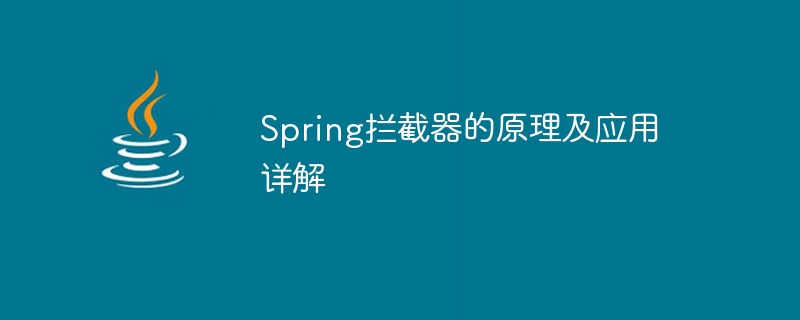

Detailed explanation of the principle and application of Spring interceptor
3.2. Access control
Interceptors can be used to determine permissions on user requests. Only users with access permissions can perform certain operations, otherwise they will be intercepted and a corresponding error will be returned. information.
3.3. Logging
Interceptors can easily record request-related information, such as requested URL, request parameters, request method, execution time, etc., which can help us better track and troubleshoot problems. .
public class MyInterceptor implements HandlerInterceptor {
@Override
public boolean preHandle(HttpServletRequest request, HttpServletResponse response, Object handler) throws Exception {
// 在请求处理之前进行预处理
// 返回true表示继续执行,返回false表示拦截请求
return true;
}
@Override
public void postHandle(HttpServletRequest request, HttpServletResponse response, Object handler, ModelAndView modelAndView) throws Exception {
// 请求处理之后进行后处理
}
@Override
public void afterCompletion(HttpServletRequest request, HttpServletResponse response, Object handler, Exception ex) throws Exception {
// 视图渲染之后进行后处理
}
}4.2. Configuring the interceptor
Next, you need to configure the interceptor in the Spring configuration file. Apply interceptors to specific request paths or URLs through the
<mvc:interceptors>
<mvc:interceptor>
<mvc:mapping path="/api/**"/> <!-- 配置拦截的路径 -->
<bean class="com.example.MyInterceptor"/> <!-- 拦截器类 -->
</mvc:interceptor>
</mvc:interceptors>4.3. Apply interceptor
Finally, apply the interceptor to the specific Controller method. You can specify the order of interceptors by adding the @Interceptor annotation on the method.
@Controller
public class MyController {
@RequestMapping("/api/hello")
@Interceptor(Order=1)
public String hello() {
// 处理请求
return "hello";
}
}The above is a detailed analysis of the principle and application of Spring interceptor. I hope it can be helpful to readers. The use of interceptors is very flexible and can be expanded and customized according to specific business needs.
The above is the detailed content of Detailed explanation of the principles and application scenarios of Spring interceptor. For more information, please follow other related articles on the PHP Chinese website!




